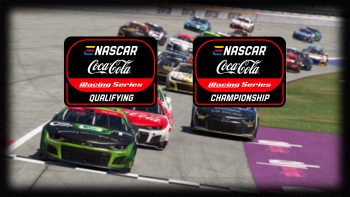
I love cars
February 17th, 2010 by John Hughes
I love cars. As long as I can remember, I’ve loved them. As a boy of 14 I purchased my first car, long before I had a driver’s license and I had my 2nd car, a 1971 Firebird, the very next year. Even though I never got to drive either of those cars, it instilled a passion that I still hold on to.
Fast forward to today. (Many, many years later) In the past 5 years I’ve been privileged enough to drive some cars and run on tracks I never thought I would – from a Dodge Viper to a late model stock car, from Lime Rock to Thompson Speedway. I’ve been to race shops ranging from Newman-Haas to Jr. Motorsports. And now thanks to iRacing, I get to build 3d replicas of some of these great cars. As a car enthusiast and artist, I’m living the dream.
While my job may not be as glorious as being a driver for the cars I create, it’s one I enjoy very much. And while the only similarity between reading about what I do and reading a good novel is that they both can make you sleepy, I would like to give you some insight into what goes into creating the 3d cars that you see on the tracks of iRacing. So sit back, pull up a chair and drink lots of caffeine. This could take awhile.
I would like to give you some insight into what goes into creating the 3d cars that you see on the tracks of iRacing. So sit back, pull up a chair and drink lots of caffeine. This could take awhile.
Before I set off to write this blog I went digging for some notes I had taken during our first company meeting where we discussed what we were hoping to build with iRacing. And while a lot of the stuff I had written sounded really ambitious, at least in the context of where we were back then, it’s nice to see that we have mostly kept to that initial game plan and the future is getting better every day. One of the places where we deviated is of particular interest to this blog though. Polys (short for polygons) are the building blocks of a 3d model, and the more you can use the more detailed the models can be. In NASCAR Racing 2003 the poly budget for a car was right at 1000 polys. Our projections for iRacing: 1600-2000 polys. While that’s double the poly count, it’s “extremely” low by today’s standards. Thankfully those numbers didn’t stick and we have gradually increased the detail over the years from approximately 10,000 polys in our Skip Barber car to right at 26,000 for the Dallara.
The amount of detail we get for art reference today is incredible. With laser scans, cad data provided by the manufacturer and thousands of digital photographs, we are able to see things today in a lot higher resolution than ever before. Once I receive this data it’s time to start the modeling process. Unfortunately there is no easy button for this, so models are still built the old fashioned way in 3d Studio Max.
First we start by building a high poly model of the exterior of the car as well as the wheels which will be used for the normal mapping. High poly models tend to run around 500,000 polys or more and make a really big difference in the car’s appearance once complete. The time for this varies as each car is unique. For instance, on the Dallara we had to build 3 different nose and rear wing configurations based on different tracks. This is in stark contrast to the VW which was a fairly simple build.
Moving on, next we go about reducing the polys of the model to something much closer to what will be in the final release. Even with the increased poly budget, we still have to make tough decisions on how much detail we can retain and still maintain acceptable frame rates. As hard as it is to make cuts, it has forced us find creative ways to keep details high. One of the things we have done is create custom shadow models for the cars. By taking items such as the rear axle, exhaust, and other items under and around the car and making it so that they don’t cast shadows, we’ve picked up a nice performance boost with an almost imperceptible visual difference. This is just one example of numerous tricks we’ve picked up over the years.
On a side note: One of the more frequent criticisms with our cars has been with the tires. While the laser scans and cad data we receive gives us incredible detail to work with, round tires can eat thru our poly budget before you can say Mangler. Believe it or not, one tire on the Dallara has over twice as many polys as a complete car did in 2003. That said, we continue to try and find ways to make them look better and we have even gone back recently and added more polys to some of the open wheel cars such as the Formula Mazda. This, unfortunately, is a never-ending process of trying to find a balance between performance and beauty.
Next it’s on to the cockpit. This normally ends-up being one of the most time consuming parts of the modeling process mostly due to the fact that resource for the cockpit isn’t always as good as it is on the exterior, and since the cockpit of the car is what you will see most of the time while racing, more time is spent trying to make it as convincing as possible. As artists, we cursed the day that they made the cameras inside the cars more adjustable. There was a time when we could leave out parts that weren’t visible from a fixed point of view that now, well, aren’t always as hidden. Advancing technology isn’t always your friend.
Some of the first cars we built used separate sets of lower resolution textures for the exterior cockpit (seen in replays) and much higher resolution textures for the driver’s view. We have since changed the modeling process so that we can make use of those same higher resolution textures for the exterior view as well. This not only gives us much better visuals, but it uses less texture space and also speeds up the texturing process. Anything that speeds up Brian Simpson is bordering on miraculous. (smile)
Well, that about wraps up this blog post. While I could write on and on about creating the damage models, LODS (levels of detail) and other mind-numbing things, I think it’s time I get back to work on what really matters: getting this Mustang FR500s completed. In the future I hope to find a ghost writer to do these for me, but should that not happen, well, there is always caffeine.
















































